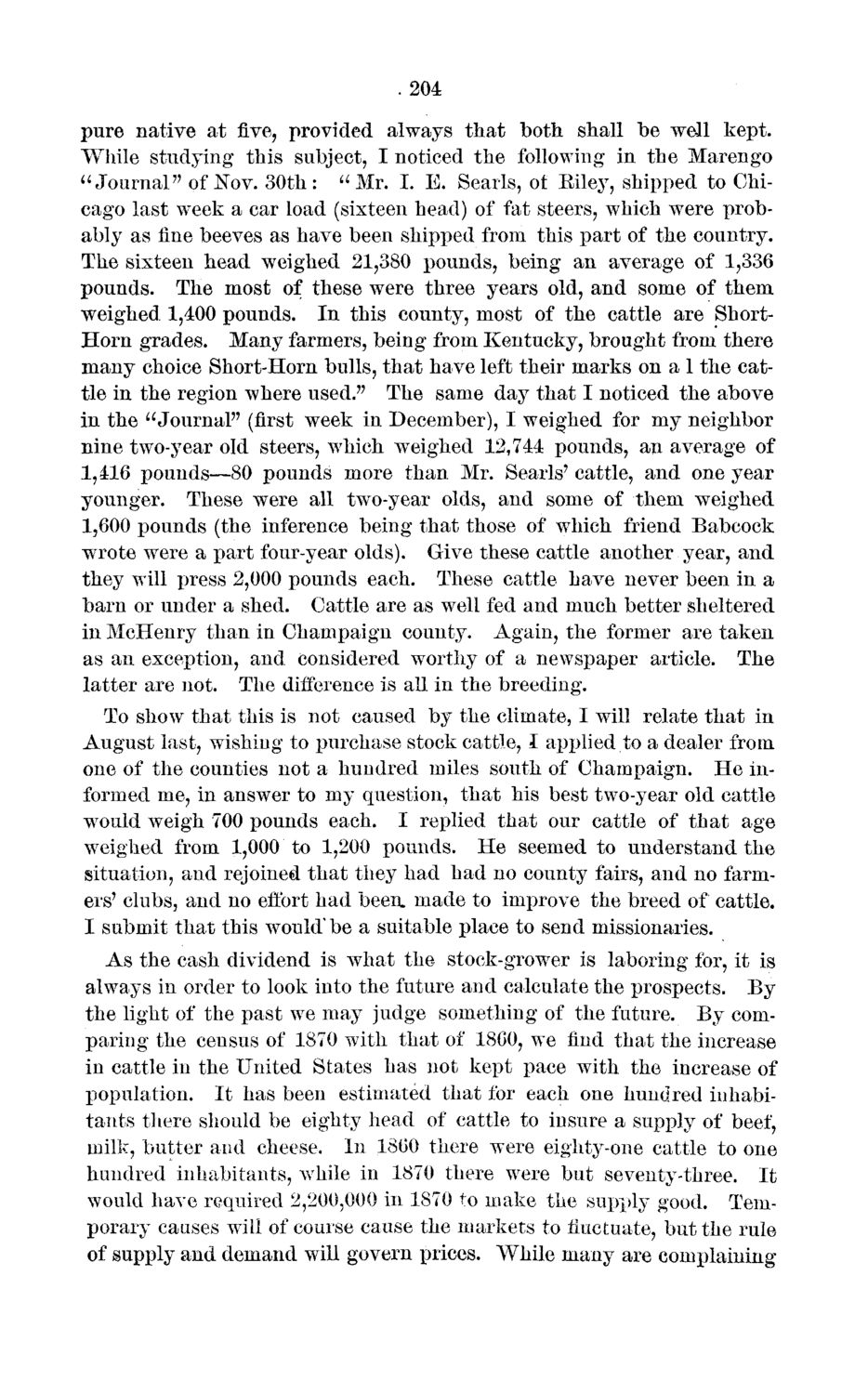| |
| |
Caption: Board of Trustees Minutes - 1873
This is a reduced-resolution page image for fast online browsing.

EXTRACTED TEXT FROM PAGE:
. 204 pure native at five, provided always that both shall be well kept. While studying this subject, I noticed the following in the Marengo "Journal" of Nov. 30th: "Mr. I. E. Searls, ot Eiley, shipped to Chicago last week a car load (sixteen head) of fat steers, which were probably as line beeves as have been shipped from this part of the country. The sixteen head weighed 21,380 pounds, being an average of 1,336 pounds. The most of these were three years old, and some of them weighed 1,400 pounds. In this county, most of the cattle are ShortHorn grades. Many farmers, being from Kentucky, brought from there many choice Short-Horn bulls, that have left their marks on a 1 the cattle in the region where used." The same day that I noticed the above in the "Journal" (first week in December), I weighed for my neighbor nine two-year old steers, which weighed 12,744 pounds, an average of 1,416 pounds—80 pounds more than Mr. Searls' cattle, and one year younger. These were all two-year olds, and some of them weighed 1,600 pounds (the inference being that those of which friend Babcock wrote were a part four-year olds). Give these cattle another year, and they will press 2,000 pounds each. These cattle have never been in a barn or under a shed. Cattle are as well fed and much better sheltered in McHenry than in Champaign county. Again, the former are taken as an exception, and considered worthy of a newspaper article. The latter are not. The difference is all in the breeding. To show that this is not caused by the climate, I will relate that in August last, wishing to purchase stock cattle, I applied.to a dealer from one of the counties not a hundred miles south of Champaign. He informed me, in answer to my question, that his best two-year old cattle w7ould weigh 700 pounds each. I replied that our cattle of that age weighed from 1,000 to 1,200 pounds. He seemed to understand the situation, and rejoined that they had had no county fairs, and no farmers' clubs, and no effort had been, made to improve the breed of cattle. I submit that this would'be a suitable place to send missionaries. As the cash dividend is what the stock-grower is laboring for, it is always in order to look into the future and calculate the prospects. By the light of the past we may judge something of the future. By comparing the census of 1870 with that of 1860, we find that the increase in cattle in the United States has not kept pace with the increase of population. It has been estimated that for each one hundred inhabitants there should be eighty head of cattle to insure a supply of beef, milk, butter and cheese. In 1860 there were eighty-one cattle to one hundred inhabitants, while in 1870 there were but seventy-three. It would have required 2,200,000 in 1870 to make the supply good. Temporary causes will of course cause the markets to fluctuate, but the rule of supply and demand will govern prices. While many are complaining
| |